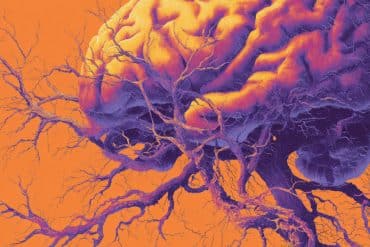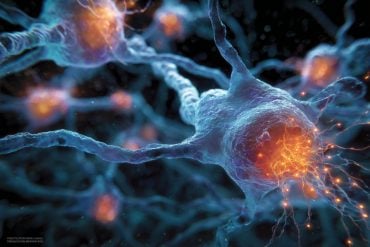Summary: A new study reveals exercises that improve cardiorespiratory fitness may help to support health by altering the presence, activity and clustering of gut bacteria.
Source: The Physiological Society.
Bacteria, often synonymous with infection and disease, may have an unfair reputation. Research indicates there are as many, if not more, bacterial cells in our bodies as human cells, meaning they play an important role in our physiology (1). In fact, a growing body of evidence shows that greater gut microbiota diversity (the number of different species and evenness of these species’ populations) is related to better health. Now, research published in Experimental Physiology has suggested that the efficiency with which we transport oxygen to our tissues (cardiorespiratory fitness) is a far greater predictor of gut microbiota diversity than either body fat percentage or general physical activity.
The findings suggest that exercise at a sufficiently high intensity, to improve cardiorespiratory fitness, may support health through favourable alterations in the presence, activity and clustering of gut microbes. Such exercise-induced improvements, in cardiorespiratory fitness, often correspond with central (e.g. increased volume of blood pumped by the heart each beat) and peripheral adaptations (e.g. increased number of capillaries to transport oxygen from blood to muscles).
Before now, it was understood that higher cardiorespiratory fitness tended to coincide with greater gut microbiota diversity, but it was unclear whether this relationship was attributable to body fat percentage or physical activities of daily-living. Since cancer treatment is known to trigger physiological changes detrimental to cardio-metabolic health, including increased body fat percentage and declining cardiorespiratory fitness, this research was performed on cancer survivors. In total, 37 non-metastatic breast cancer survivors, who had completed treatment at least one year prior, were enrolled.
Participants performed a graded exercise test to estimate peak cardiorespiratory fitness, assessments of total energy expenditure and examination of gut microbiota from faecal swipes. The results showed that participants with the higher cardiorespiratory fitness had significantly greater gut microbiota diversity compared to less fit participants. Further statistical analyses highlighted that cardiorespiratory fitness accounted for roughly a quarter of the variance in species richness and evenness, independent of body fat percent.

These data offer intriguing insight into the relationship between cardiorespiratory fitness and gut microbiota diversity. However, given the cross-sectional nature of the study design, the research team’s findings are correlative in nature. The participant sample was restricted to women with a history of breast cancer, who tended to exhibit low cardiorespiratory fitness and other health problems, meaning generalisation to other groups should be made with caution.
Stephen Carter, lead author of the paper from Indiana University, is enthusiastic about continuing his team’s research:
“Our group is actively pursuing an interventional study to determine how variation in exercise intensity can influence gut microbiota diversity under controlled-feeding conditions to uncover how exercise may affect functional outcomes of gut microbiota, as well as, studying how exercise prescription may be optimized to enhance health outcomes among clinical populations.”
Source: The Physiological Society
Publisher: Organized by NeuroscienceNews.com.
Image Source: NeuroscienceNews.com image is in the public domain.
Original Research: Abstract for “Gut microbiota diversity associates with cardiorespiratory fitness in post‐primary treatment breast cancer survivors” by Stephen J. Carter, Gary R. Hunter, J. Walker Blackston, Nianjun Liu, Elliot J. Lefkowitz, William J. Van Der Pol, Casey D. Morrow, Jesseca A. Paulsen, and Laura Q. Rogers in Experimental Physiology. Published February 14 2019.
doi:10.1113/EP087404
[cbtabs][cbtab title=”MLA”]The Physiological Society”Exercise May Improve Health by Increasing Gut Bacterial Diversity.” NeuroscienceNews. NeuroscienceNews, 18 February 2019.
<https://neurosciencenews.com/exercise-microbiome-diversity-10762/>.[/cbtab][cbtab title=”APA”]The Physiological Society(2019, February 18). Exercise May Improve Health by Increasing Gut Bacterial Diversity. NeuroscienceNews. Retrieved February 18, 2019 from https://neurosciencenews.com/exercise-microbiome-diversity-10762/[/cbtab][cbtab title=”Chicago”]The Physiological Society”Exercise May Improve Health by Increasing Gut Bacterial Diversity.” https://neurosciencenews.com/exercise-microbiome-diversity-10762/ (accessed February 18, 2019).[/cbtab][/cbtabs]
Abstract
Gut microbiota diversity associates with cardiorespiratory fitness in post‐primary treatment breast cancer survivorsx
Cancer treatment uniquely triggers multiple physiologic shifts detrimental to overall health. Though previous research indicates a link between gut microbiota and cardiorespiratory fitness, it is unclear whether these findings are due to potential underlying effects %body fat or free‐living activity energy expenditure (AEE). Microbe composition of fecal specimens from 37 breast cancer survivors were determined using 16S microbiome analyses. Individual‐sample microbiota diversity (α‐diversity) and between‐sample community differences (β‐diversity) were examined. Peak oxygen uptake (V̇O2peak) was estimated from a graded exercise test (GXT) consistent with the modified‐Naughton protocol, in which, exercise terminates at 85% age‐predicted heart rate max (HRmax). AEE was measured over 10‐days using doubly‐labeled water wherein %body fat was calculated from total body water. Pearson correlations revealed α‐diversity indices (Chao1, Observed Species, PD Whole Tree, Shannon) positively associated with V̇O2peak (r = 0.34 to 0.51; p < 0.05) whereas %HRmax during Stages 1–4 of the GXT (r = ‐0.34 to ‐0.50; p < 0.05) and %body fat (r = ‐0.32 to ‐0.41; p < 0.05) were negatively associated with the same α‐diversity indices. Multiple linear regression models showed V̇O2peak accounted for 22% and 26% of the variance in taxonomic richness (Observed Species) and phylogenic diversity after adjustment for %body fat and menopausal status. Unweighted UniFrac (β‐diversity) was significant for several outcomes involving cardiorespiratory fitness and significant taxa comparisons were found. Associations between gut microbiota and free‐living AEE were not found. Results from the present work suggest cardiorespiratory fitness, not physical activity, is a superior correlate of gut microbiota diversity.






